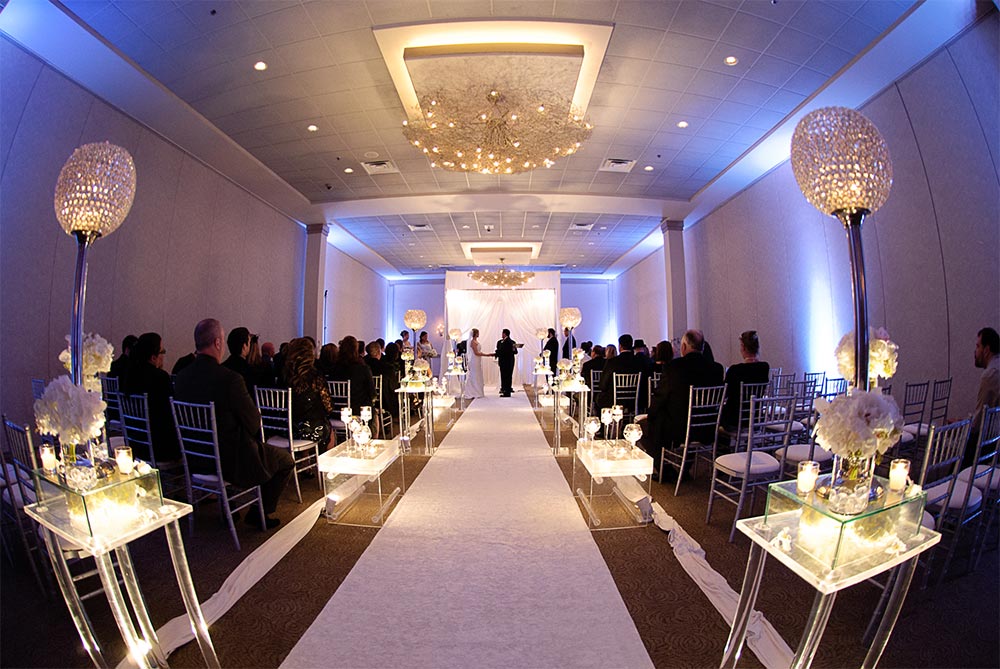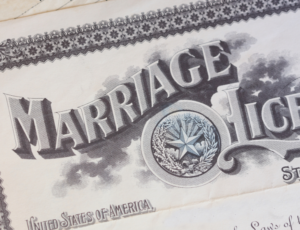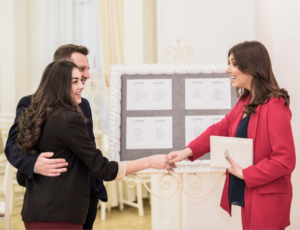 Planning your wedding can feel like a never ending stream of decisions. You have to decide on the perfect venue, and of course the date and time of the service.
Planning your wedding can feel like a never ending stream of decisions. You have to decide on the perfect venue, and of course the date and time of the service.
Then you need to hire the wedding vendors; sometimes spending weeks interviewing caterers, entertainers, and photographers until you find exactly what you want.
Then there are the dress fittings, cake tastings, rehearsal dinners….the list goes on and on. With all of the decisions you have to make, it can be all too easy to lose sight of the ceremony itself.
Suddenly you find yourself a few weeks away from the big day, and you’ve hardly considered the type of ceremony you want; let alone put pen to paper to begin crafting the service. Well, don’t panic. We are here to help.
Writing Your Wedding Ceremony
Writing your wedding ceremony can be quite daunting. After all, it’s the most important day of your life, and you want to get it right. You know there are components that have to be included in any wedding ceremony, but are there areas where you can get more creative?
Are there portions of a traditional ceremony that you want to eliminate, or sections of the service that you want to highlight? To help make the process easier, we’ve put together a simple guide to writing your wedding ceremony.
Decide on a Style
The first step in crafting your wedding ceremony is to decide on the style of the service. Are you and your spouse to be traditionalists? Will your wedding ceremony reflect your religious beliefs, or do you want a secular service?
These are questions you and your partner will need to discuss before you can begin to properly plan your wedding ceremony. Consider your families, and their expectations. While the day is all about you, that doesn’t necessarily mean you should ignore and traditional elements that would please your parents.
Set the Tone
It is important to set the tone of your wedding ceremony early. This will make it easier to write your vows, and to decide on which components of the ceremony you want to keep or discard. Do you want a quiet, solemn service that sets a more traditional tone, or do you want a modern ceremony that speaks to your individuality and reflects your fun loving nature? Neither choice is right or wrong, but you need to decide early on in the planning process to make crafting the ceremony much easier.
Which Components Will You Include
Unless you are sticking to a strictly traditional religious ceremony, you are free to craft whatever service you like. First, however, you need to be familiar with the different components of a wedding ceremony so you can make an informed decision.
- The Opening – A general welcoming of your guests and the ann0ouncement of the start of the service.
- The Address – This is a message to the assembled guests. In a traditional church wedding this would be the sermon. If you have chosen a secular ceremony, this is when your wedding officiant addresses your guests, often recounting how the two of you met and your time together as couple.
- The Readings – These may be performed by a priest or rabbi, or by close friends or relatives. The readings may include passages from the bible, poems, or text written by your officiant or one of your guests. You may have as many readings, by as many different readers, as you like.
- The Expression of Intent – This is the part of the service where you are asked if you take your partner to be your legally wedded spouse. The expression of intent is not optional, and as legally mandated must be included in the ceremony. No exceptions. That being said, you can tweak the expression of intent to suit your style and tone, but you may not eliminate it.
- The Vows – You have a fair amount of flexibility when it comes to your vows. You can rely on traditional texts, or you can write your own. You can memorize them and recite them one to another,or you can have your officiant read them and you repeat them as prompted. The choice of wedding vows should be informed by the tone and style you have set for your ceremony.
- The Ceremony of the Rings – Your officiant should speak of the symbolism of the wedding rings. Again, you can use a traditional text or write your own.
- The Ring Vows – These are the vows you speak when you slip the ring on your partner’s finger. Your vows can be as simple as “With this ring I thee wed”, or as elaborate and personal as you see fit.
- The Pronouncement and the Kiss – This is the wedding finale, when your officiant will pronounce you wed, and you will kiss your partner.
These are the basic components of any wedding ceremony. Now, aside from the Expression of Intent, you may include or exclude any of these components. You are free to change the order to suit your style, and to alter the presentation to match your tone. You can be as traditional or nontraditional as you like.
Personalize Your Ceremony
Finally, don’t be afraid to be creative. This is your wedding day, and you should both have the ceremony you want. Feel free to put your own individual stamp on the proceedings. Choose the readings you want, regardless of their source, and include the people you love in the service.
If you want a traditional wedding, reach back through the generations and create a ceremony that respects your religious and cultural heritage. If you want to be more creative, craft a ceremony that speaks to you both and that launches a new set of traditions. As long as you craft a loving ceremony, that reflects both of your personalities and respects your guests, there can be no wrong decisions.





